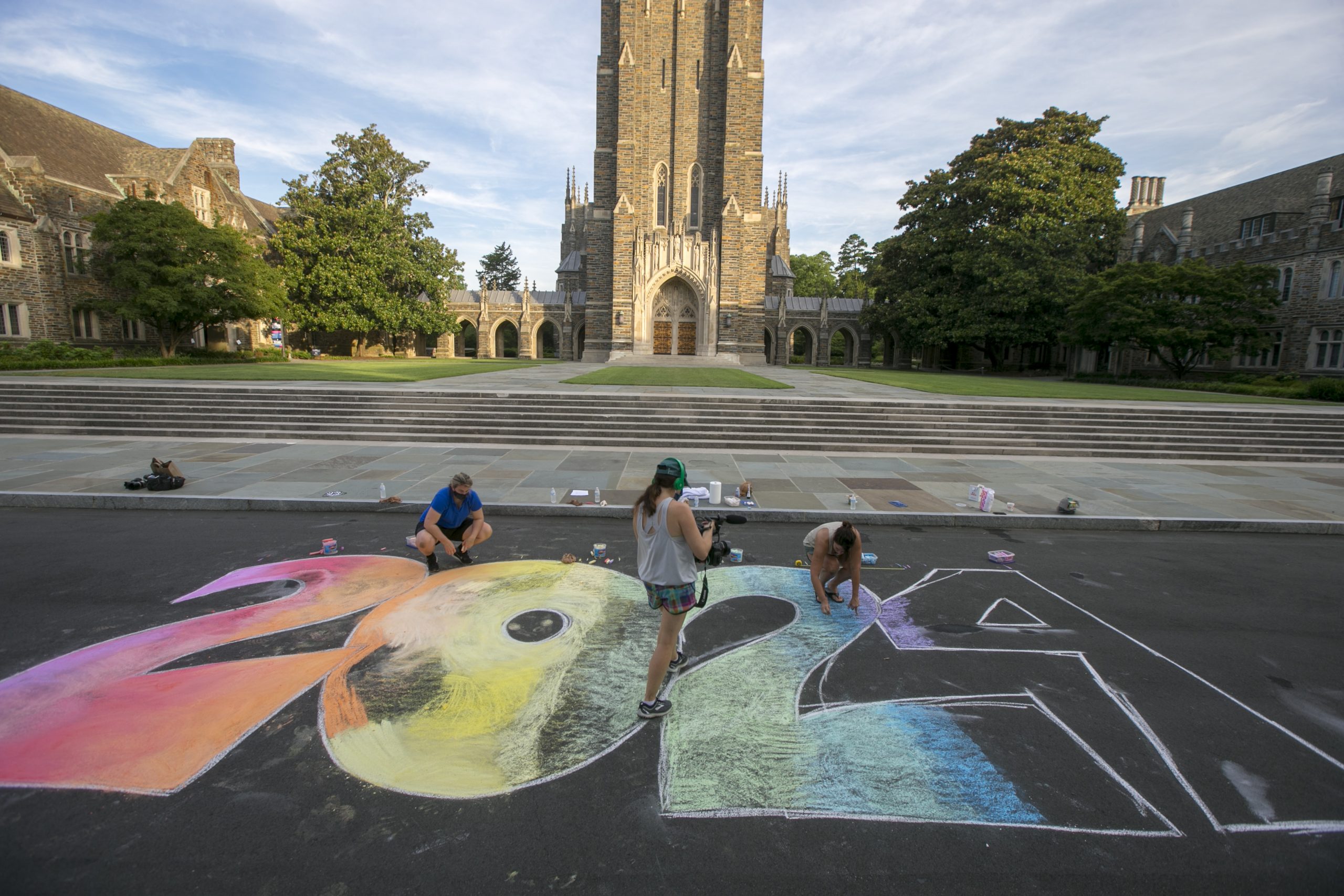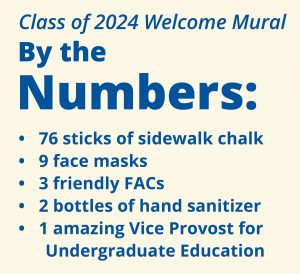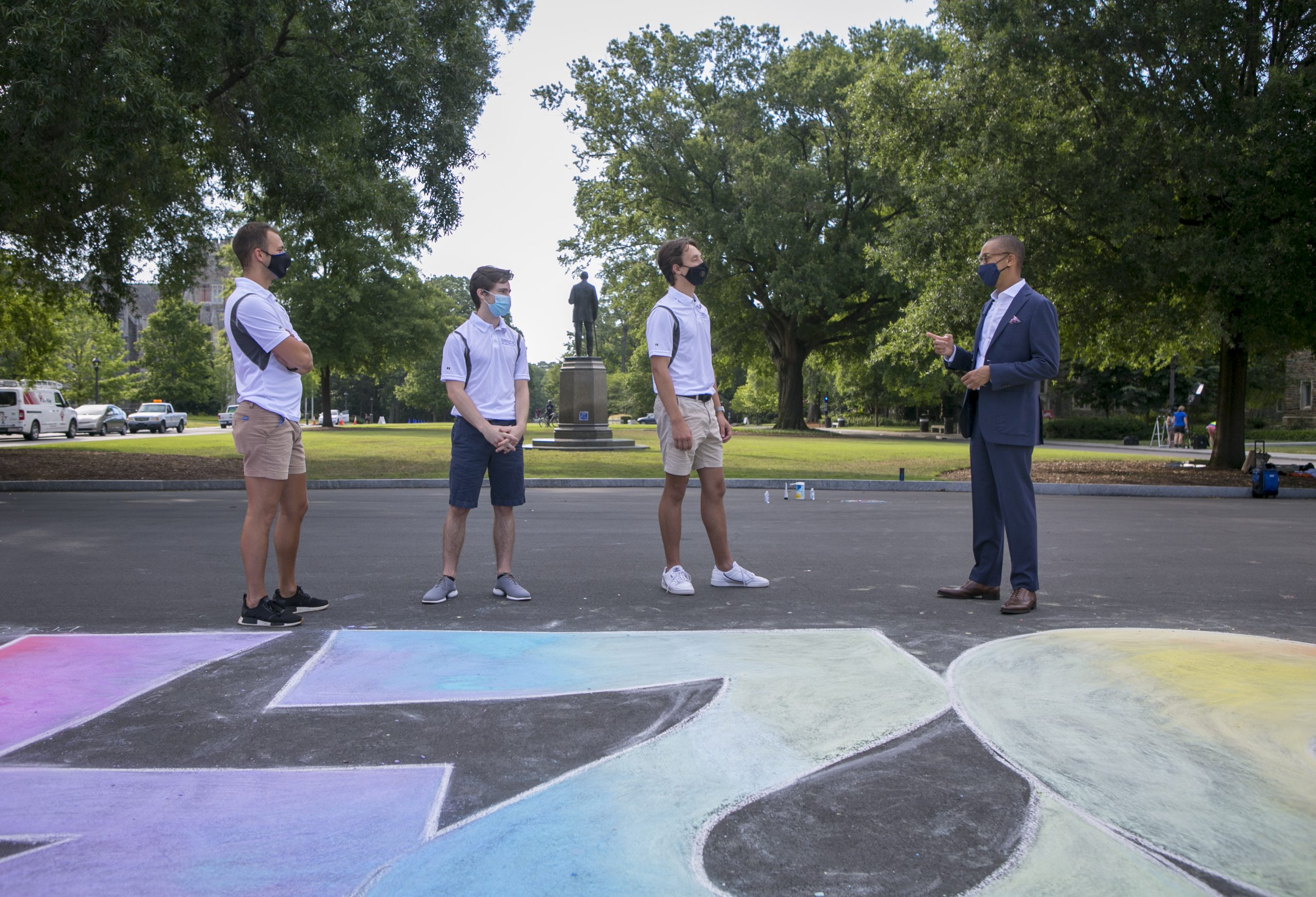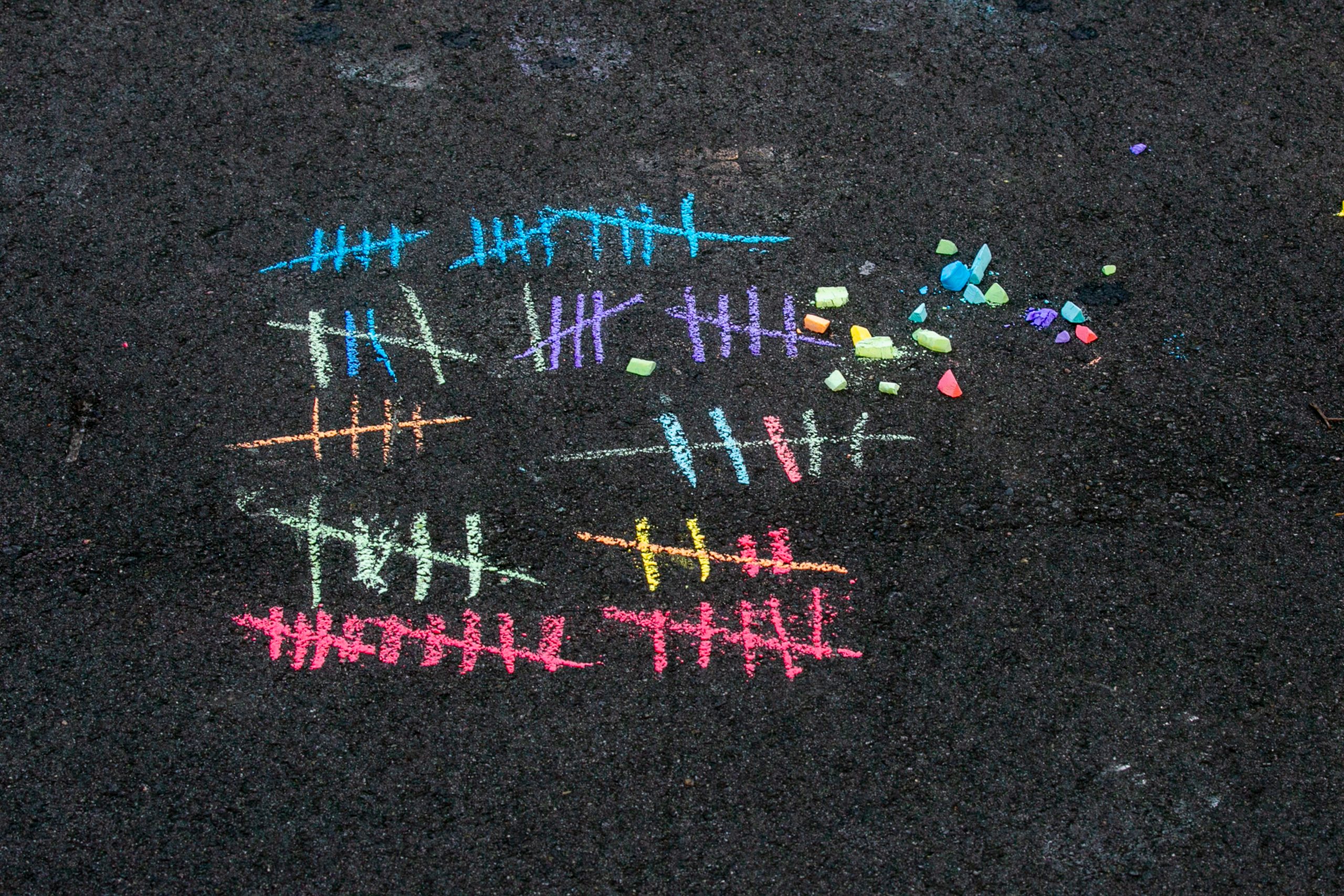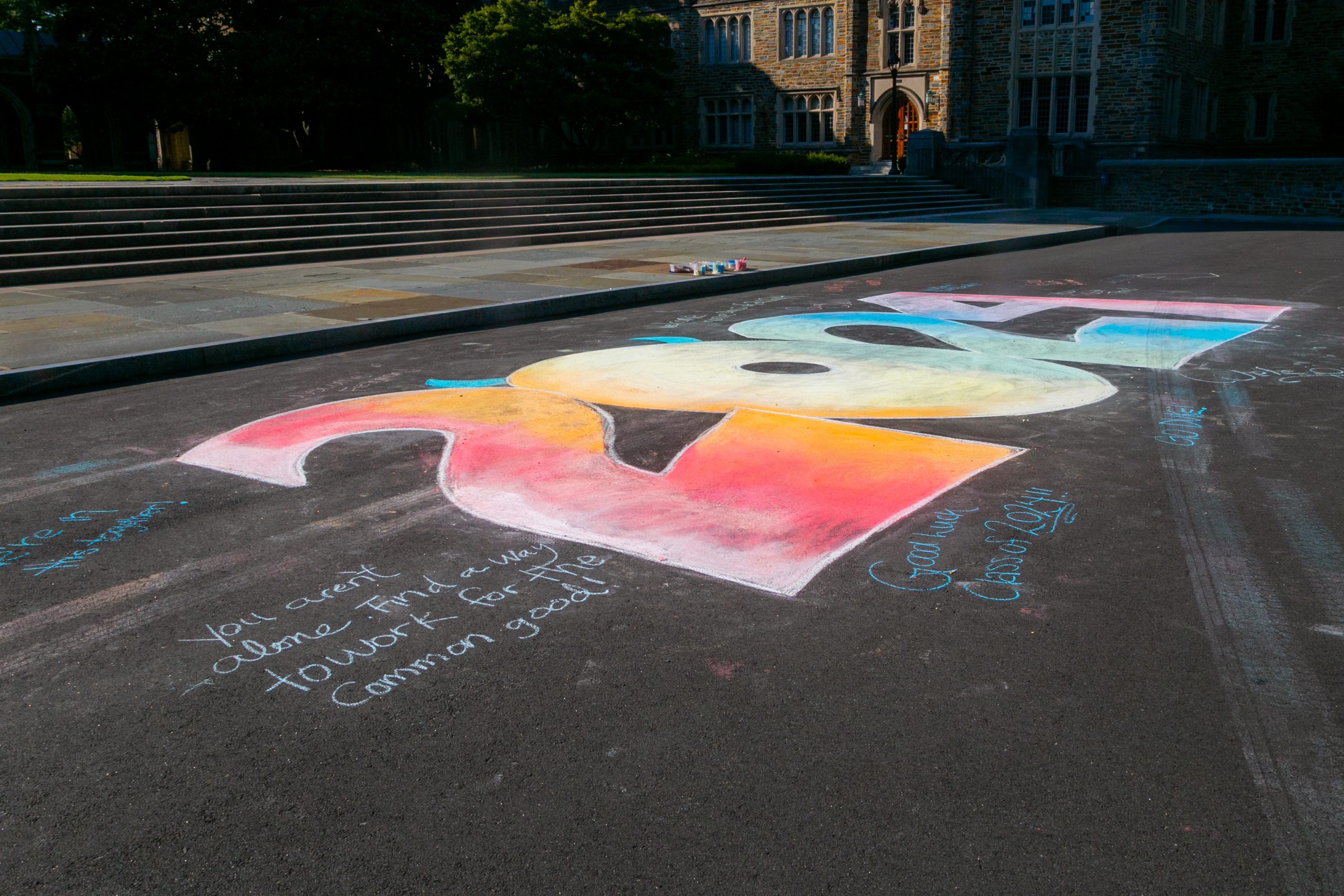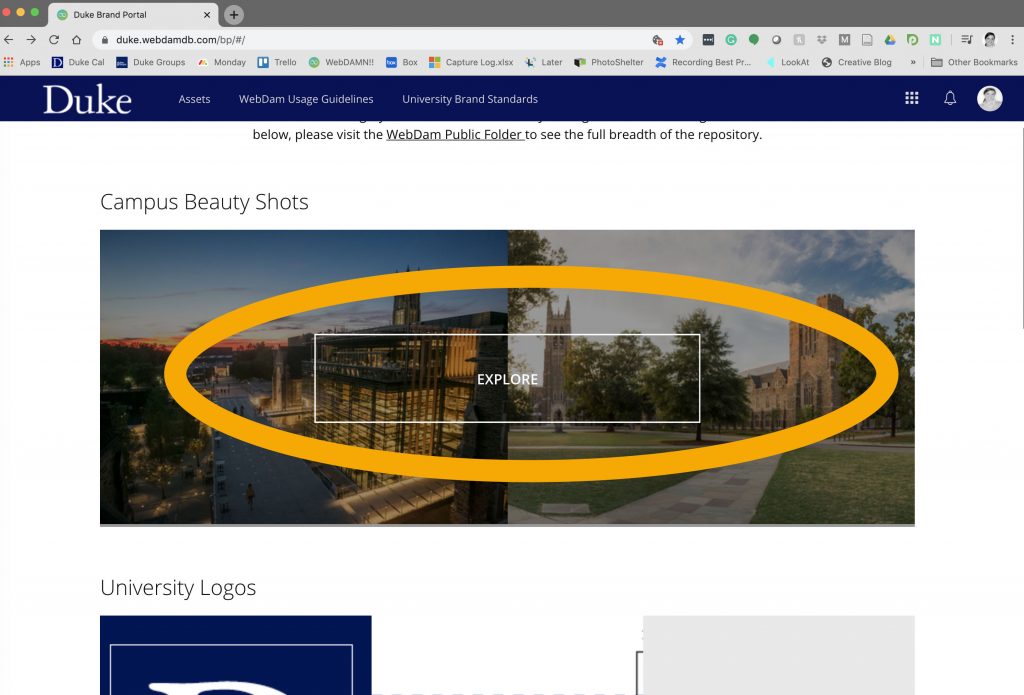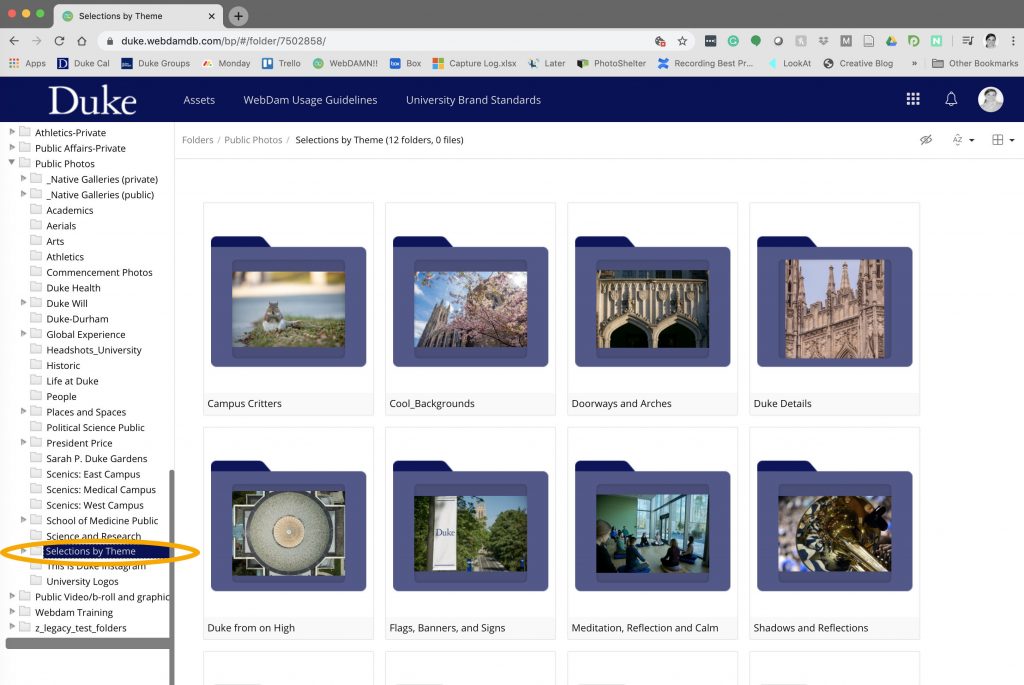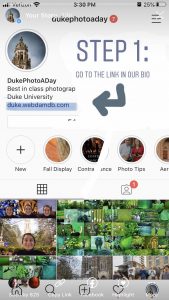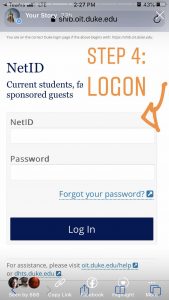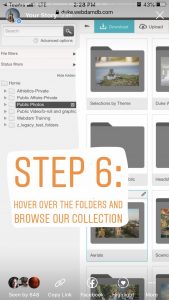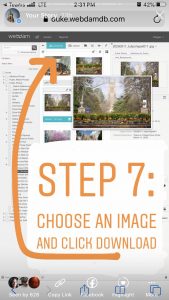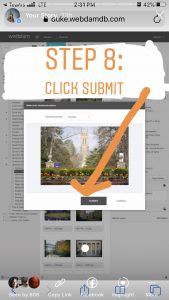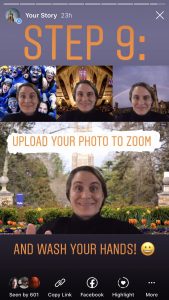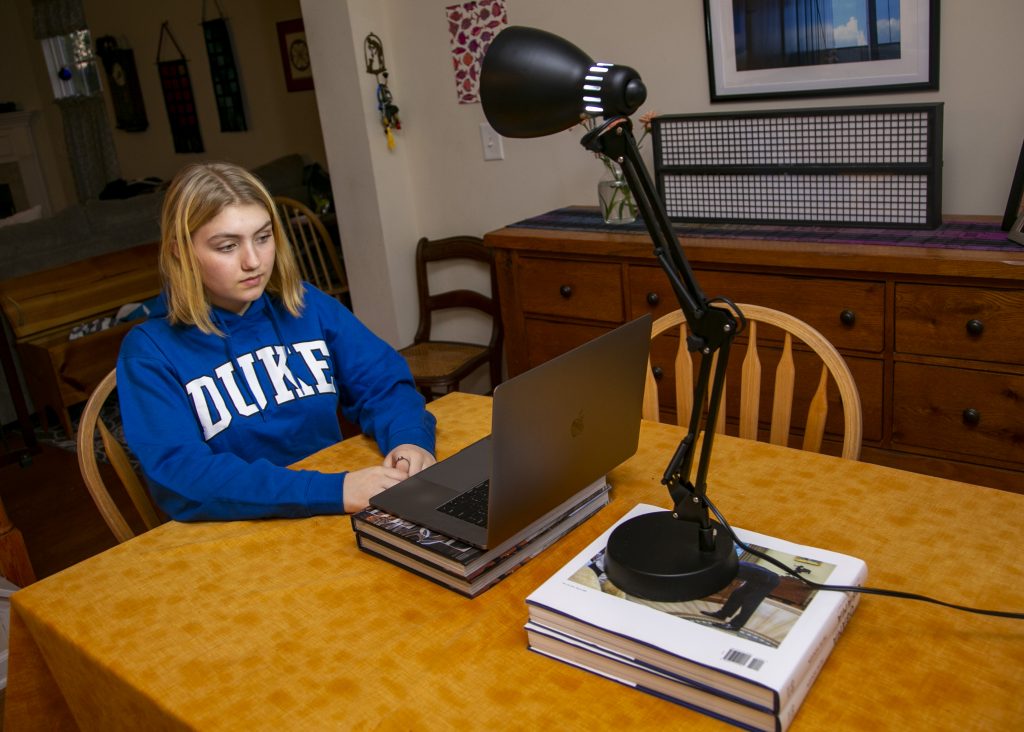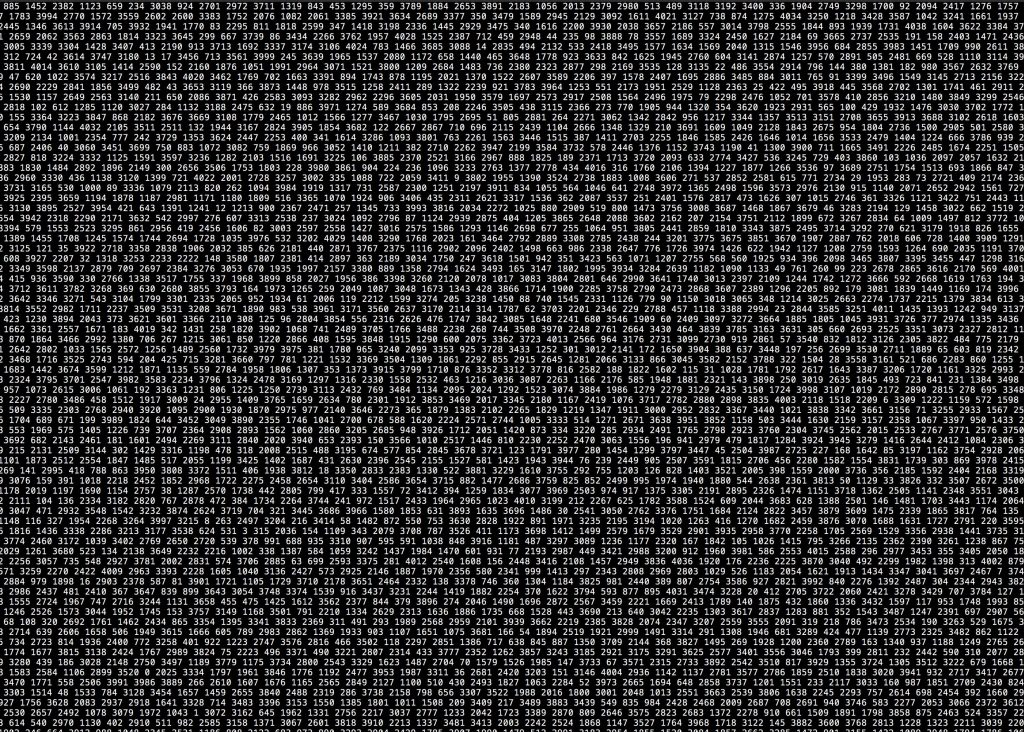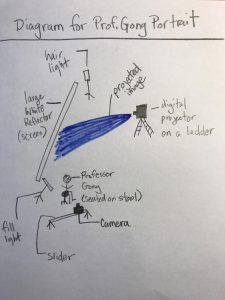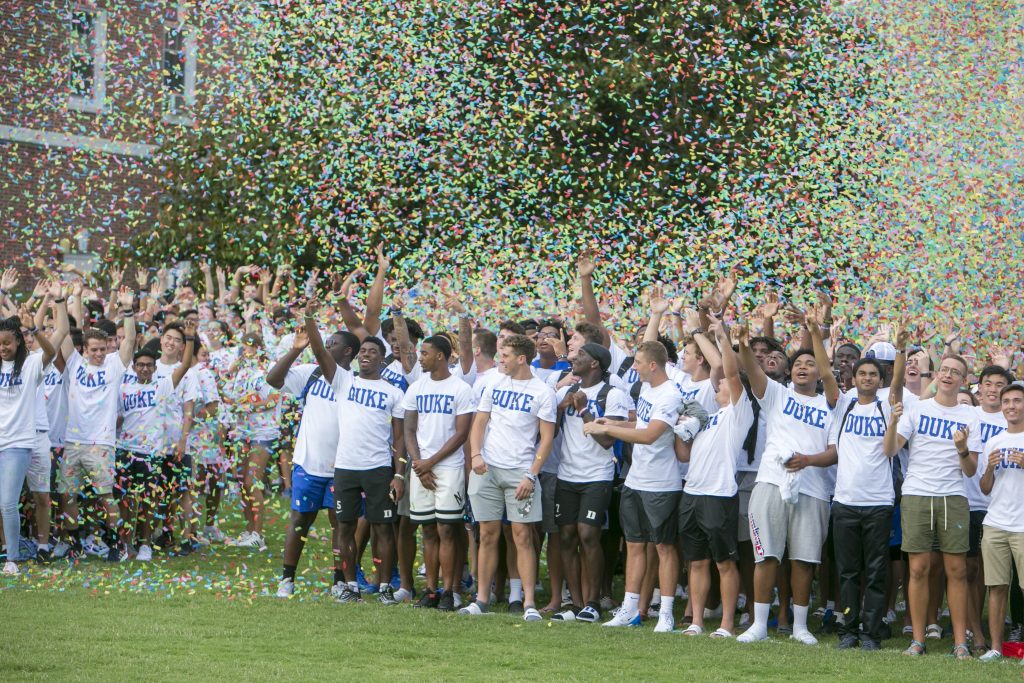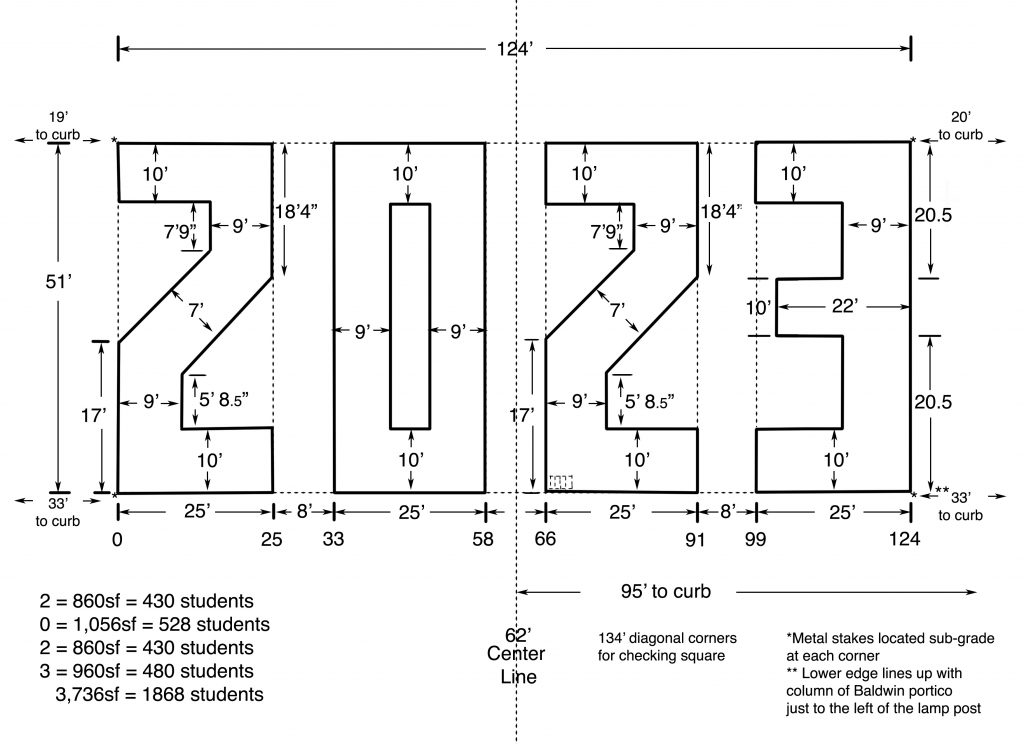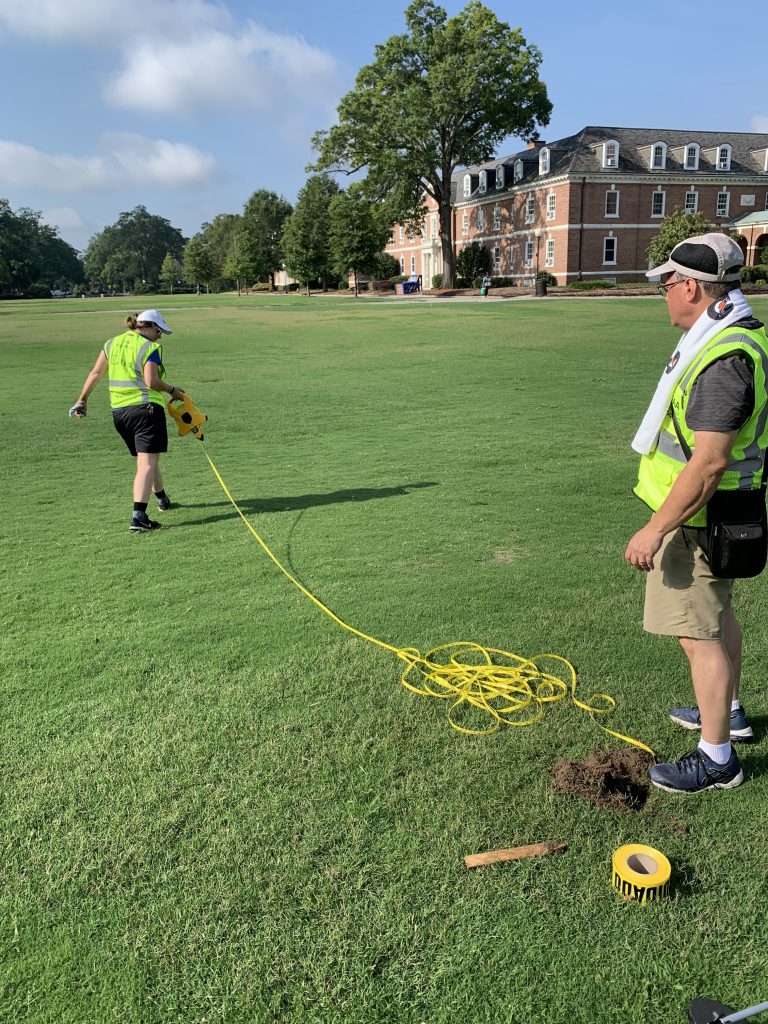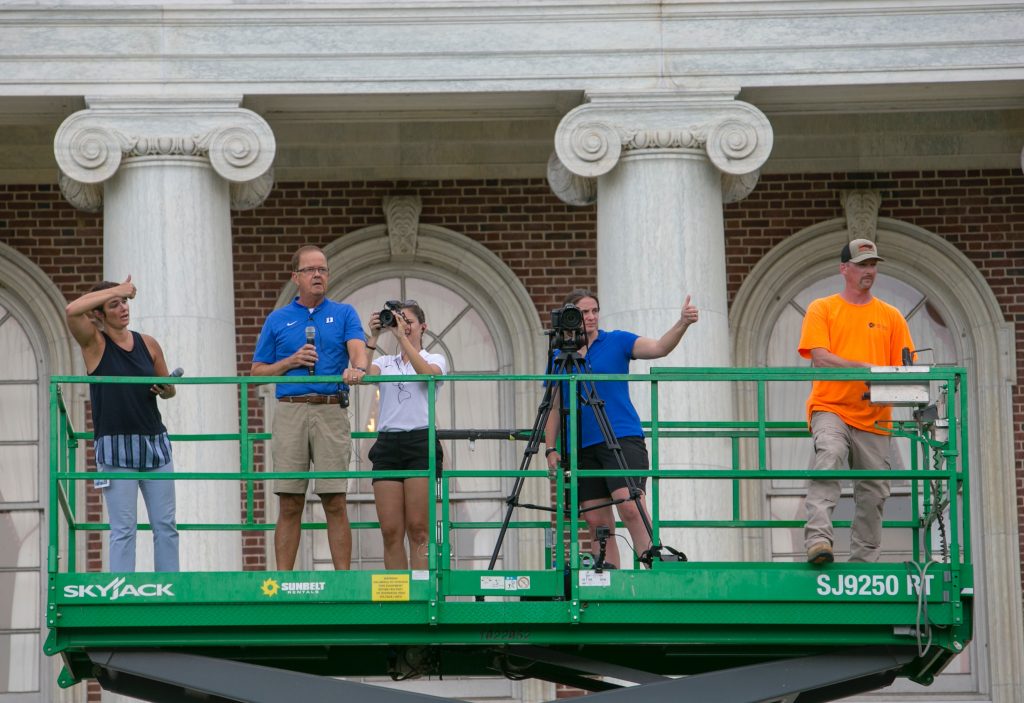One of my favorite parts of taking scenic campus photos is showing how members of the Duke community enjoy our amazing campus. Unfortunately, the heat and humidity of North Carolina summers cause most folks to stay indoors. So, during the summer, I shift my focus toward showing Duke’s beautiful architecture and landscape. Here are a few tips and tricks I’ve learned throughout my 16 years of documenting Duke during the summer months.
- Head out during the mornings or evenings and avoid going out during the middle of the day. Not only is the light more flattering, but the heat is less intense, and there is a greater chance that you’ll run into people who are also out and about on campus.
- The morning sun peeks through the trees overlooking Baldwin Auditorium on Duke’s East Campus.
- Folks walk through the arches of the Chapel arcade during a summer evening.
- The sun sets over the Duke Reclamation Pond.
- Take advantage of the quiet time to focus on details. Our campus is one of the most beautiful universities in the world. However, during the hustle and bustle of the fall and spring semesters, it’s easy to overlook the amazing details of Duke’s architecture, flora, and fauna.
- Water from the Roney Fountain at Duke Gardens sprays mist into the air on a hot summer day.
- The windows of Perkins Library are framed against an evening sky.
- A dragonfly rests on top of a lily pad in the fish pool at Duke Gardens.
- It’s ok to head inside. Most of the time, I stay outside during my campus walkabouts, but there are times when heading inside to take a break from the heat can yield a nice photo.
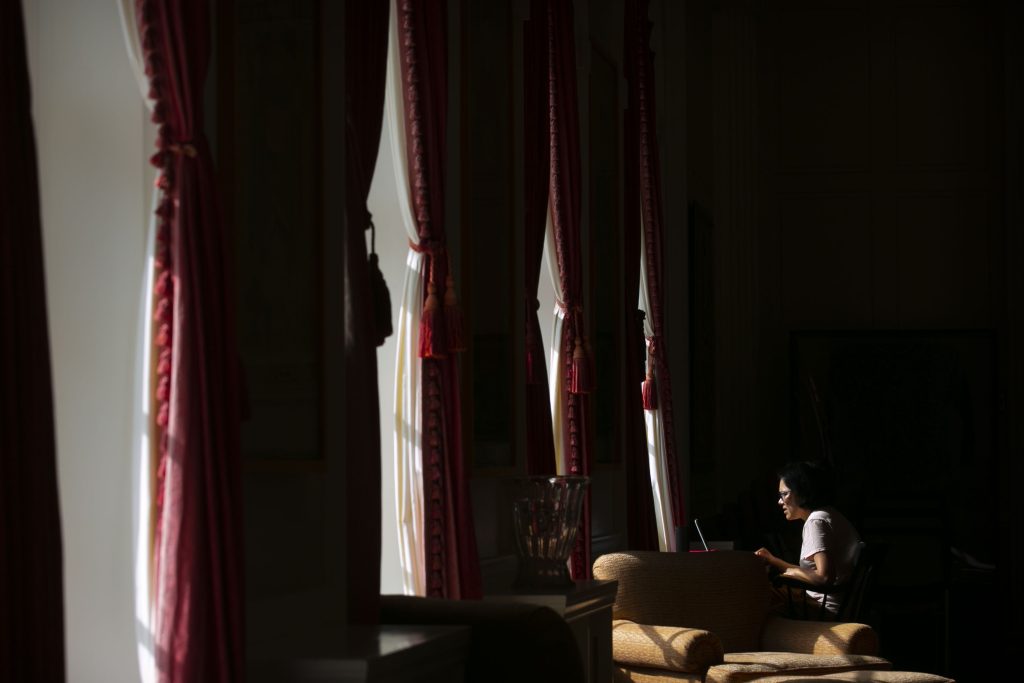
Lilly Library’s Thomas Reading Room, located on the second floor, offers a space for students to study on East Campus.
- Experiment with video! One of my favorite summertime activities is watching the clouds. However, capturing their slow movement in a photo can be challenging, so I experimented with recording a time-lapse video of one of my favorite campus views.
Finally, stay hydrated and take plenty of breaks during your campus walkabouts. The fall will be here before we know it, and I’m enjoying photographing a quiet campus during the remaining weeks of summer.





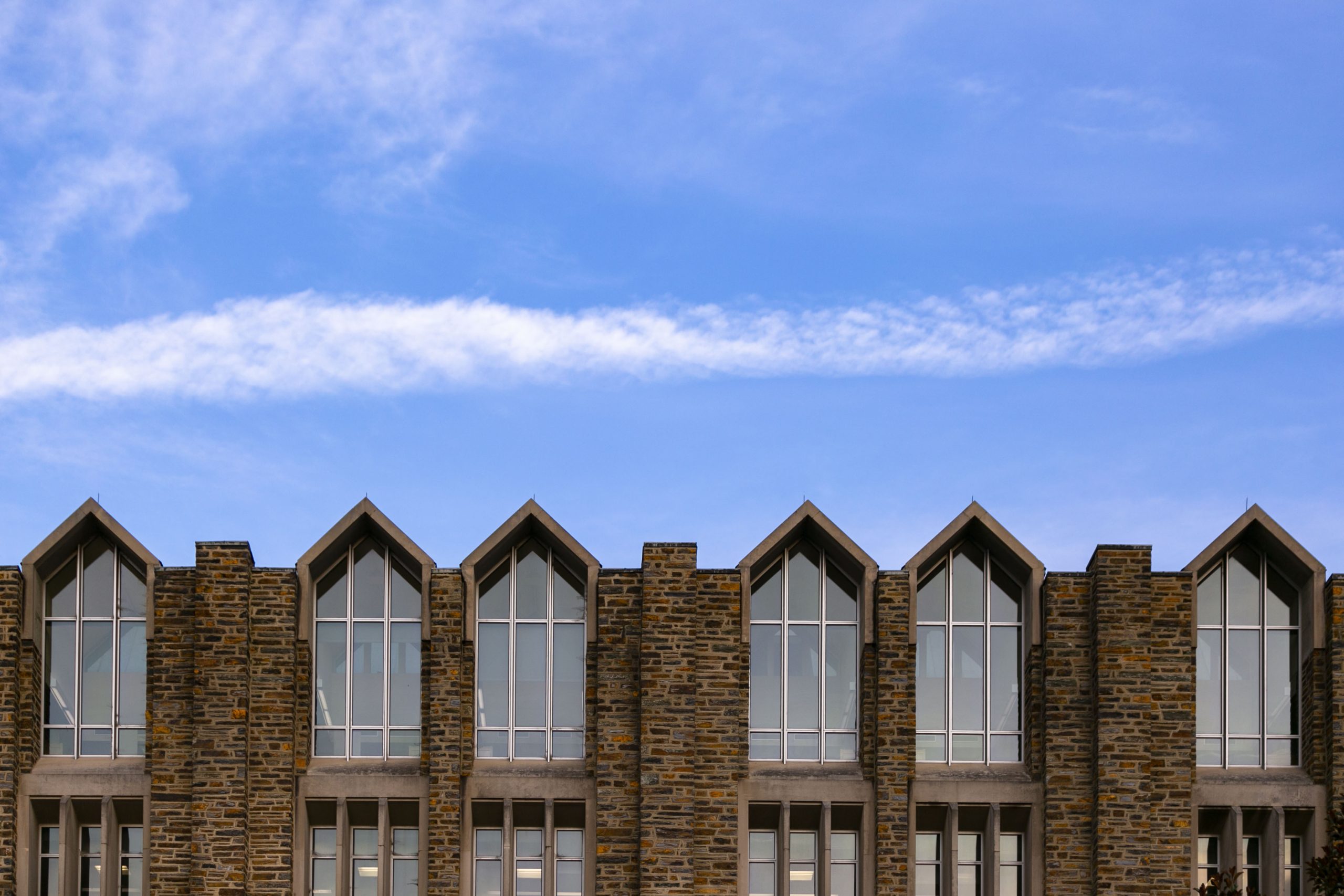

 After brainstorming a few ideas, we decided to use blue string lights and luminarias to light the residential quad on the west campus. The lights and luminarias represent our thankfulness for getting through 2020 and our hope for a brighter future.
After brainstorming a few ideas, we decided to use blue string lights and luminarias to light the residential quad on the west campus. The lights and luminarias represent our thankfulness for getting through 2020 and our hope for a brighter future.




